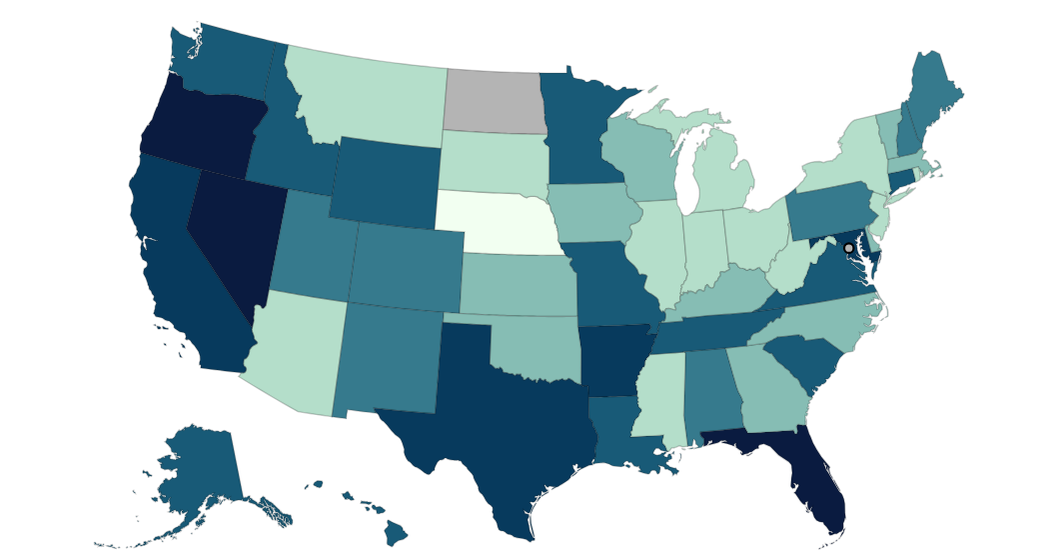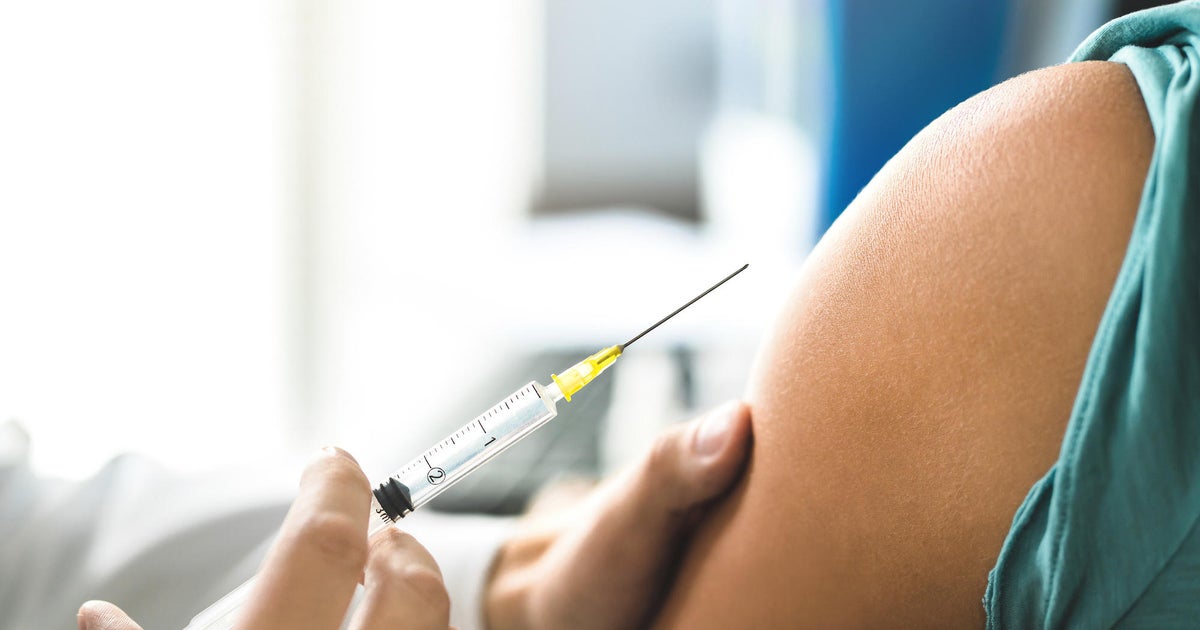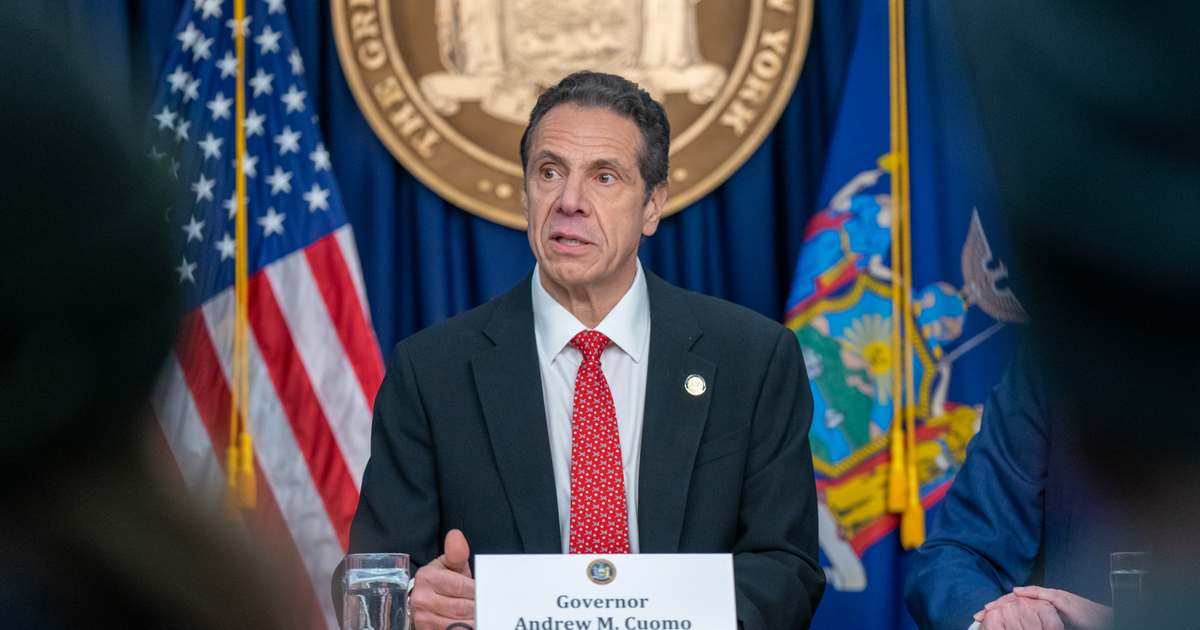CBS News
Map shows states where COVID levels are “high” or “very high” as summer wave spreads

More than half of states are now seeing “high” or “very high” levels of SARS-CoV-2, the virus that causes COVID-19, in their wastewater testing, according to figures published Friday by the Centers for Disease Control and Prevention, as this summer’s COVID wave reaches a growing share of the country.
Nationwide, the CDC now says that the overall level of SARS-CoV-2 in wastewater is “high” for the first time since this past winter. Levels remain “high” across western states, where trends first began to worsen last month, while other regions are now seeing steeper increases at or near “high” levels.
Friday’s update is the first since last month, due to the Fourth of July holiday.
The uptick is in line with a growing number of COVID-19 patients showing up in emergency rooms. The District of Columbia and 26 states are now seeing “substantial increases” in COVID-19 emergency room visits, the agency says.
Nationwide, the average share of emergency room patients with COVID-19 is also now the highest it has been since February and has increased 115% from a month ago.
Centers for Disease Control and Prevention
Overall emergency room visits and hospitalization trends remain at what the CDC deems to be “low” levels in several states, far below the deadly peaks reached at earlier points during the pandemic.
But COVID-19 emergency room visits crossed the threshold into “moderate” levels in Hawaii last month, after a surge that topped the last two waves of the virus. Florida also is now at “moderate” levels, amid a wave that is at peaks not seen since this past winter.
“We are seeing patterns that are consistent with what we have observed over the last couple of years in the summer, where we have seen upticks in activity that have occurred around this time of year that are not quite as large as what we see during the winter peaks,” said Aron Hall, deputy director for science in the CDC’s Coronavirus and Other Respiratory Viruses Division.
Centers for Disease Control and Prevention
Health authorities in some communities have said in recent weeks that the uptick is a sign that now could be the time for people looking to avoid COVID-19 infections — especially at-risk Americans, with underlying health issues — to start taking extra precautions like masking and testing in many parts of the country.
Hall said the recent increase did not look to be any more severe than previous summer waves, but served as a reminder of the importance of getting vaccinated and other steps, like seeking out treatment for those at increased risk of severe disease.
“The activity that we are seeing now is consistent with previous trends. It is not necessarily cause for any additional alarm, but is an important reminder that there are key measures that folks can take to protect themselves,” he said.
When will COVID-19 peak this summer?
Most of the first states to reach “high” COVID-19 levels in wastewater last month were in the West, where the share of COVID-19 patients in emergency rooms has also accelerated. Reported infections in nursing homes have also grown in this region.
Other countries have also seen COVID-19 trends rise this summer earlier than last year. In the United Kingdom, COVID-19 hospitalizations are at levels not seen since February.
But there are signs now that this summer wave may have now reached its peak across some states in this region, where the virus first picked up steam.
Forecasts updated by the CDC this week estimate that COVID-19 infections are growing across almost all states, but are “stable or uncertain” in three: Hawaii, Oregon and New Mexico.
“It’s hard to predict the future. And if COVID has taught is anything, it’s that things can always change. But based on previous trends, where we have seen sort of a summer wave that has peaked around July or August, is what we might expect for this year,” said Hall.
Nursing home infections have slowed for a second straight week in the Pacific Northwest, in the region spanning Alaska through Oregon.
In Hawaii, where COVID-19 emergency room trends this summer had peaked at levels worse than both their last winter and summer waves of the virus, patients have slowed for multiple weeks now.
Hall cautioned that while COVID-19 trends have slowed after summer peaks in recent years, they still remained far worse than the low levels seen during past springtime lulls in the virus.
“We don’t see necessarily a nadir or bottoming out, between the summer and winter waves, at least historically. So that’s important as we think about protecting people that are vulnerable,” he said.
What is the latest variant in this COVID-19 wave?
The CDC last updated its every-other-week variant projections after the Fourth of July, estimating that the KP.3 variant had grown to more than a third of infections nationwide.
Behind it were the KP.2 and LB.1 variants, two close relatives that are all descendants of the JN.1 strain that dominated infections this past winter. Put together, these three variants — KP.3, KP.2 and LB.1 — made up more than 3 in 4 infections nationwide.
Hall said there is “still no indication of increased severity of illness” associated with any of these variants, similar to what the agency has said in recent weeks.
Hall said the agency tracks data from hospitals and ongoing studies, as well as detailed analyses of the genetic changes to the virus, to search for signs that the risk from new variants might have grown.
“None of those data sources have given us any indication that these variants cause more severe disease than what we have seen previously,” he said.
Through the end of June, the CDC estimated that all regions of the country were seeing a mix of these strains, though some more than others depending on the location.
KP.3 makes up the largest share of infections in several regions of the country, while LB.1 is larger around the New York and New Jersey area and KP.2 is bigger in New England.
For now, Hall said KP.3 and LB.1 are the variants that are spreading fastest, though their relative growth looks to be “considerably lower” than previous highly mutated strains like the original Omicron variant.
“It’s not anything as dramatic as some of the earlier shifts in the virus that we’ve seen,” he said.
CBS News
Tupperware files for bankruptcy amid slumping sales

Tupperware and some of its subsidiaries filed for Chapter 11 bankruptcy protection, the once-iconic food container maker said in a statement late Tuesday.
The company has suffered from dwindling sales following a surprise surge during the COVID-19 pandemic, when legions of people stuck at home tried their hands at cooking, which increased demand for Tupperware’s colorful plastic containers with flexible airtight seals.
A post-pandemic rise in costs of raw materials and shipping, along with higher wages, also hurt Tupperware’s bottom line.
Last year, it warned of “substantial doubt” about its ability to keep operating in light of its poor financial position.
“Over the last several years, the Company’s financial position has been severely impacted by the challenging macroeconomic environment,” president and CEO Laurie Ann Goldman said in a statement announcing the bankruptcy filing.
“As a result, we explored numerous strategic options and determined this is the best path forward,” Goldman said.
The company said it would seek court approval for a sale process for the business to protect its brand and “further advance Tupperware’s transformation into a digital-first, technology-led company.”
The Orlando, Florida-based firm said it would also seek approval to continue operating during the bankruptcy proceedings and would continue to pay its employees and suppliers.
“We plan to continue serving our valued customers with the high-quality products they love and trust throughout this process,” Goldman said.
The firm’s shares were trading at $0.5099 Monday, well down from $2.55 in December last year.
Tupperware said it had implemented a strategic plan to modernize its operations and drive efficiencies to ignite growth following the appointment of a new management team last year.
“The Company has made significant progress and intends to continue this important transformation work.”
In its filing with the U.S. Bankruptcy Court for the District of Delaware, Tupperware listed assets of between $500 million and $1 billion and liabilities of between $1 billion and $10 billion.
The filing also said it had between 50,000 and 100,000 creditors.
Tupperware lost popularity with consumers in recent years and an initiative to gain distribution through big-box chain Target failed to reverse its fortunes.
The company’s roots date to 1946, when chemist Earl Tupper “had a spark of inspiration while creating molds at a plastics factory shortly after the Great Depression,” according to Tupperware’s website.
“If he could design an airtight seal for plastic storage containers, like those on a paint can, he could help war-weary families save money on costly food waste.”
Over time, Tupper’s containers became popular that many people referred to any plastic food container as Tupperware. And people even threw “Tupperware parties” in their homes to sell the containers to friends and neighbors.
CBS News
9/17: CBS Evening News – CBS News

Watch CBS News
Be the first to know
Get browser notifications for breaking news, live events, and exclusive reporting.
CBS News
JD Vance echoes Trump, blames Democrats for apparent assassination attempt

Watch CBS News
Be the first to know
Get browser notifications for breaking news, live events, and exclusive reporting.










